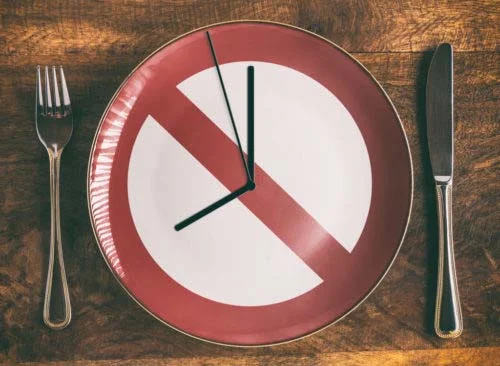Discover the Benefits of Intermittent Fasting – Here Are 4 Approaches You Can Take to Get Started!
DISCLAIMER: Please consult your doctor before performing any kind of diet change including intermittent fasting. This article is for informational purposes only.
Before the age of Big Pharma, the rise of Western medicine, and a pill as the answer for every ailment; fasting was a key purifying force used by doctors all over the world.
Intermittent fasting has come from being a religious ritual and medical practice to become a key health booster used by many in our Fit Democracy community today.
We outline the health benefits associated with intermittent fasting in a feature article in this month's Fit Democracy magazine (subscribe for your free copy here). In the meantime, if you are interested in trying intermittent fasting then let's explore 4 of the most popular fasting setups and the pros and cons of each method to see if they work for your lifestyle.
The 16:8 Protocol
Popularised by Martin Berkhan and more recently Greg O’Gallagher this is arguably one of the most popular setups which see you split each day into a 16-hour fasting period and an 8-hour eating period.
It’s commonly set up with the fasting window starting late evening after dinner (8–9pm) lasting until around midday (12–13pm) to complete the full 16 hours with the bulk of the time spent asleep.
During the 8-hour eating window, your meal structure is up to you. A lot of people opt for either a small snack and 2 large meals or just 2 meals depending on calorie allowance.
However, the fasting and eating windows can be set up in whichever best suits the individual using the protocol, if you prefer to eat breakfast and skip dinner then that can also work.
If you’re training during the fast then get yourself some BCAAs to sip before/during the workout to help prevent muscle breakdown
Pros
Eating can be structured to one’s preference within the eating window
A large chunk of the fasting is done whilst asleep
Fasting and eating schedule is more lifestyle friendly
Cons
May be difficult for breakfast eaters
The 5:2 Setup
Another popular set up is the 5:2 diet created by Dr. Michael Moseley, which sees you fast for two 24-hour periods per week. During the non-fasting days you're advised to ‘eat normally’ and during the 24-hour fasts, men are instructed to eat 600 calories and women 500 calories.
The 5:2 diet places no restrictions on when you do the 24-hour fasts or whether or not they are carried out back to back.
Pros
Allows small meals on fasting days which can make the fast more bearable for some
No restrictions on when the fast is carried out
Participants are advised to ‘eat normally’ which places no restrictions on their diet
A large chunk of the fasting is done whilst asleep
Cons
Some people may find it difficult to fast for full 24-hour periods
Lacks structure for those who need/want more guidance than ‘eat normally’
Eat Stop Eat
Created by Brad Pilon it works very similarly to the 5:2 diet and by incorporating one or two 24-hour fasts into your week. During the 24 hours fast no food can be consumed but calorie-free drinks are ok.
Eat stop eat is flexible with no foods being off limits, no calorie counting or food weighing being prescribed and no restrictions set in place. Although you are advised to eat mindfully and not treat your non-fasting days as a free for all.
Pros
More guidance is given for non-fasting days with recommendations to eat mindfully
A large chunk of the fasting is done whilst asleep
Cons
Some people may find it difficult to fast for full 24-hour periods
No food can be eaten during the 24-hour fast
May lack nutritional guidance for some people with recommendations only to ‘eat mindfully’
The Warrior Diet
Created by Ori Hofmekler this fasting protocol has you fasting for 20 hours every day and eating one large meal each evening. During the fast, you’re allowed to eat a few small portions of raw vegetables or fruits, fresh juice or some protein.
During the four-hour eating window, Ori Hofmekler advises you to eat your food in a particular order starting with vegetables, followed by protein, with fat coming last. It’s only once you’ve eaten these food groups in this order that you can think about having some carbohydrates and that’s only if you’re still hungry.
Pros
A large chunk of the fasting is done whilst asleep
You can eat a few small snacks during the fasting window, which can make the fast easier
Cons
Has an extended fasting window that will most likely impact lifestyle
Food has to be consumed in a particular order
That's it, four methods to suit different lifestyles. If you try intermittent fasting please reach out to us on the website or social media channels to let us know how the experience was for you.
We also cover the health benefits associated with intermittent fasting in a feature article in our latest Fit Democracy magazine so please check that out if you are interested (subscribe for your free copy here).







